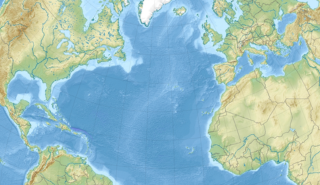Research Highlights Key Role of Tropical Atlantic Ocean Currents in Shaping Global Climate
The churning of the upper ocean in the tropics of Atlantic Ocean plays a crucial role in shaping long-term climate patterns across the world, a new study has found.
Researchers have discovered that changes in the ocean’s mixed layer – the topmost section where wind and waves blend warm surface waters with cooler depths – are the primary force behind a climate phenomenon known as Atlantic Multidecadal Variability (AMV) in the tropics.
The AMV has far-reaching effects on global climate. It influences weather patterns from North America to Europe and Africa, affecting everything from hurricane activity in the Caribbean to rainfall in the Sahel region.
Dr Balaji Senapati, lead author of the study at the University of Reading, said: “Until now, it was believed that changes in heat exchange between the ocean and atmosphere drove the climate patterns that affect weather in the various parts of the world. Our new study challenges that view, demonstrating that the depth of the ocean’s mixed layer is the key player in global climate variability.
“This research advances our understanding of Atlantic climate variability and highlights the complex relationship between the ocean and atmosphere in shaping our planet’s climate. Insights into natural climate variability become increasingly valuable for developing effective mitigation strategies as we face the challenges of climate change.”
Forecasting improvements
The study, published this month in Geophysical Research Letters, found that when the extratropical North Atlantic is warmer than average, trade winds become weaker. This weakening causes the mixed layer of the ocean to become shallower, especially during summer. As a result, the sun’s energy warms a thinner layer of water, leading to more intense warming of the tropical Atlantic.
This process creates a feedback loop: warmer waters in the northern part of the Atlantic weaken the trade winds, which then leads to a shallower mixed layer and further warming in the tropics. When the AMV shifts to its cooler phase, this process reverses, resulting in cooler temperatures across the Atlantic.
The findings have significant implications for climate modelling and long-range forecasting. Many current climate models may not accurately represent these upper-ocean processes, potentially leading to poor predictions of the AMV and its global impacts. By incorporating this new understanding of ocean mixing into climate models, scientists hope to improve their ability to forecast long-term climate trends and their associated effects on weather patterns worldwide.

